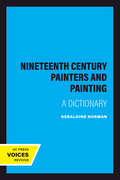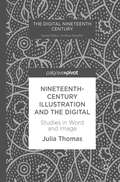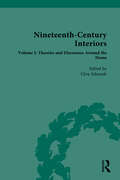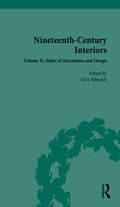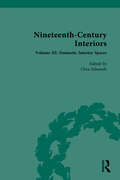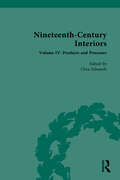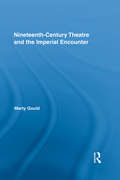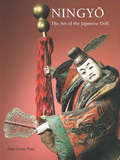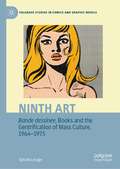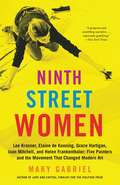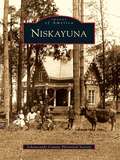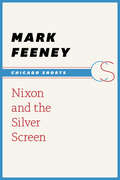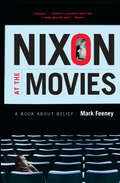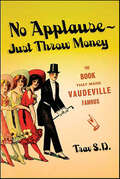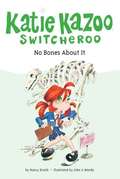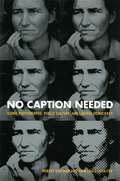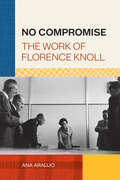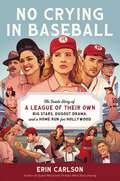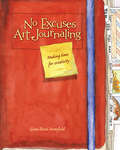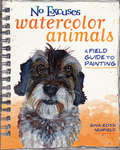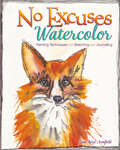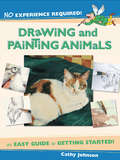- Table View
- List View
Nineteenth Century Painters and Painting: A Dictionary
by Geraldine NormanThis title is part of UC Press's Voices Revived program, which commemorates University of California Press’s mission to seek out and cultivate the brightest minds and give them voice, reach, and impact. Drawing on a backlist dating to 1893, Voices Revived makes high-quality, peer-reviewed scholarship accessible once again using print-on-demand technology. This title was originally published in 1977.
Nineteenth-Century Illustration and the Digital
by Julia ThomasThis book brings the study of nineteenth-century illustrations into the digital age. The key issues discussed include the difficulties of making illustrations visible online, the mechanisms for searching the content of illustrations, and the politics of crowdsourced image tagging. Analyzing a range of online resources, the book offers a conceptual and critical model for engaging with and understanding nineteenth-century illustration through its interplay with the digital. In its exploration of the intersections between historic illustrations and the digital, the book is of interest to those working in illustration studies, digital humanities, word and image, nineteenth-century studies, and visual culture.
Nineteenth-Century Interiors: Volume I: Theories and Discourses Around the Home
by Clive EdwardsThis volume of primary source materials documents the nature of the home and the theories and discussions around the concept. It examines the class divisions that become evident with the ostentatious lifestyles of political and society hostesses at the peak, whilst middle-class housing often in suburbia, seemed to have created a separation of home and work, arguably suggesting men and women lived in separate spheres. Working-class interiors, often seen the eyes of middle-class observers, were at the bottom of the hierarchy and often reflected concerns of social inequality and misery. The documents also address the process of purchasing and decorating a home, advice on decoration and home management, the nature of taste and comfort, and the symbolic roles of the home as an anchor in society. Accompanied by extensive editorial commentary, this collection will be of great interest to students and scholars of art history.
Nineteenth-Century Interiors: Volume II: Styles of Decoration and Design
by Clive EdwardsThis volume of primary source materials documents the nineteenth-century search for a representative style, and the alternating fashions for interiors that demonstrated the consumerism of the period. Although in some senses every interior is unique so that a style canon may seem to be meaningless, there have been important historical trends or styles that have influenced individual interiors, and these have formed the groundwork from which other styles and tastes have developed and changed. Accompanied by extensive editorial commentary, this collection will be of great interest to students and scholars of art history.
Nineteenth-Century Interiors: Volume III: Domestic Interior Spaces
by Clive EdwardsThis volume of primary source materials documents the spatial layouts of the nineteenth century home as they often became more precisely planned with rooms for specific purposes being developed. The styles began to truly reflect the owner’s taste and position. The range is of course vast from single room dwellings to large-scale mansions and numerous variations in-between. Accompanied by extensive editorial commentary, this collection will be of great interest to students and scholars of art history.
Nineteenth-Century Interiors: Volume IV: Products and Processes
by Clive EdwardsThis volume of primary source materials documents the essential practical aspects of making a home, decorating it and then furnishing it. The crucial constitutive parts that make up an interior from floor to ceiling are considered here in detail. The role of advice books and articles that attempted to direct homemakers in particular directions are examined, as are the more practical how-to publications that demonstrated the processes of interior decoration. Accompanied by extensive editorial commentary, this collection will be of great interest to students and scholars of art history.
Nineteenth-Century Theatre and the Imperial Encounter (Routledge Advances in Theatre & Performance Studies)
by Marty GouldIn this study, Gould argues that it was in the imperial capital’s theatrical venues that the public was put into contact with the places and peoples of empire. Plays and similar forms of spectacle offered Victorian audiences the illusion of unmediated access to the imperial periphery; separated from the action by only the thin shadow of the proscenium arch, theatrical audiences observed cross-cultural contact in action. But without narrative direction of the sort found in novels and travelogues, theatregoers were left to their own interpretive devices, making imperial drama both a powerful and yet uncertain site for the transmission of official imperial ideologies. Nineteenth-century playwrights fed the public’s interest in Britain’s Empire by producing a wide variety of plays set in colonial locales: India, Australia, and—to a lesser extent—Africa. These plays recreated the battles that consolidated Britain’s hold on overseas territories, dramatically depicted western humanitarian intervention in indigenous cultural practices, celebrated images of imperial supremacy, and occasionally criticized the sexual and material excesses that accompanied the processes of empire-building. An active participant in the real-world drama of empire, the Victorian theatre produced popular images that reflected, interrogated, and reinforced imperial policy. Indeed, it was largely through plays and spectacles that the British public vicariously encountered the sights and sounds of the distant imperial periphery. Empire as it was seen on stage was empire as it was popularly known: the repetitions of character types, plot scenarios, and thematic concerns helped forge an idea of empire that, though largely imaginary, entertained, informed, and molded the theatre-going British public.
Ningyo
by Alan Scott PateFamed the world over for their intricate beauty, Japanese dolls (ningyo) have played an important role in that country's culture. This first comprehensive book on antique Japanese dolls published in English focuses on the five main categories of dolls-gosho palace dolls, hina girl's day dolls, musha boy's day dolls, isho costume dolls, and theatrical dolls-made during the Edo period (1615-1868) when ningyo culture was at its peak. Features an extensive glossary and bibliography, plus 250 color photographs.
Ningyo
by Alan Scott PateFamed the world over for their intricate beauty, Japanese dolls (ningyo) have played an important role in that country's culture. This first comprehensive book on antique Japanese dolls published in English focuses on the five main categories of dolls-gosho palace dolls, hina girl's day dolls, musha boy's day dolls, isho costume dolls, and theatrical dolls-made during the Edo period (1615-1868) when ningyo culture was at its peak. Features an extensive glossary and bibliography, plus 250 color photographs.
Ningyo
by Alan Scott PateFamed the world over for their intricate beauty, Japanese dolls (ningyo) have played an important role in that country's culture. This first comprehensive book on antique Japanese dolls published in English focuses on the five main categories of dolls-gosho palace dolls, hina girl's day dolls, musha boy's day dolls, isho costume dolls, and theatrical dolls-made during the Edo period (1615-1868) when ningyo culture was at its peak. Features an extensive glossary and bibliography, plus 250 color photographs.
Ninth Art. Bande dessinée, Books and the Gentrification of Mass Culture, 1964-1975 (Palgrave Studies in Comics and Graphic Novels)
by Sylvain LesageIn France, comics are commonly referred to as the "ninth art". What does it mean to see comics as art? This book looks at the singular status of comics in the French cultural landscape. Bandes dessinées have long been published in French newspapers and magazines. In the early 1960s, a new standard format emerged: large hardback books, called albums. Albums played a key role in the emergence of the ninth art and its acceptance among other forms of literary narrative. From Barbarella in 1964 to La Ballade de la mer salée in 1975, from Astérix and its million copies to Tintin and its screen versions, within the space of just a few years the comics landscape underwent a deep transformation.The album opened up new ways of creating, distributing, and reading bandes dessinées. This shift upended the market, transformed readership, initiated new transmedia adaptations, generated critical discourse, and gave birth to new kinds of comics fandom. These transformations are analysed through a series of case studies, each focusing on a noteworthy album. By retracing the publishing and critical history of these classic bandes dessinées, this book questions the blind spots of a canon based on the album format and uncovers the legitimisation processes that turned bande dessinée into the ninth art.
Ninth Street Women: Lee Krasner, Elaine de Kooning, Grace Hartigan, Joan Mitchell, and Helen Frankenthaler: Five Painters and the Movement That Changed Modern Art
by Mary GabrielThe rich, revealing, and thrilling story of five women whose lives and painting propelled a revolution in modern art, from the National Book Award finalist. Set amid the most turbulent social and political period of modern times, Ninth Street Women is the impassioned, wild, sometimes tragic, always exhilarating chronicle of five women who dared to enter the male-dominated world of twentieth-century abstract painting--not as muses but as artists. From their cold-water lofts, where they worked, drank, fought, and loved, these pioneers burst open the door to the art world for themselves and countless others to come. Gutsy and indomitable, Lee Krasner was a hell-raising leader among artists long before she became part of the modern art world's first celebrity couple by marrying Jackson Pollock. Elaine de Kooning, whose brilliant mind and peerless charm made her the emotional center of the New York School, used her work and words to build a bridge between the avant-garde and a public that scorned abstract art as a hoax. Grace Hartigan fearlessly abandoned life as a New Jersey housewife and mother to achieve stardom as one of the boldest painters of her generation. Joan Mitchell, whose notoriously tough exterior shielded a vulnerable artist within, escaped a privileged but emotionally damaging Chicago childhood to translate her fierce vision into magnificent canvases. And Helen Frankenthaler, the beautiful daughter of a prominent New York family, chose the difficult path of the creative life. Her gamble paid off: At twenty-three she created a work so original it launched a new school of painting. These women changed American art and society, tearing up the prevailing social code and replacing it with a doctrine of liberation. In Ninth Street Women, acclaimed author Mary Gabriel tells a remarkable and inspiring story of the power of art and artists in shaping not just postwar America but the future.
Nippenose Valley (Images of America)
by Wayne O. WelshansThe first settlers in Nippenose Valley found the area to be burned over and seemingly inhospitable. They settled high near the springs, but the wet clay soils above caused them to move down to the limestone valley floor. They soon discovered that the soil beneath them was some of the richest in the county. These photographs trace the communities that define Nippenose Valley, from Antes Creek to the villages of Millport, Rauchtown, Jamestown, Oval, Collomsville, and Bastress. Nippenose Valley documents the development of an agricultural community that has evolved slowly over the years while still holding on to its roots.
Niskayuna
by Schenectady County Historical SocietyIn the 17th century, the area now called Niskayuna consisted mostly of cornfields. Niskayuna officially became a town in Schenectady County when the county split off from Albany County in 1809. From its early days as a farming community to its present state as a suburban town, Niskayuna has attracted residents from many areas. Transportation has been crucial to the development of the town, beginning with the Albany-Schenectady Turnpike. After the turnpike came the Erie Canal, proposed in 1808 and completed in 1825, which linked the waters of Lake Erie in the west to the Hudson River. Water transportation was soon joined by the Schenectady Railroad Corporation and the Troy and Schenectady Railroad. Finally, a modern system of roads and highways came into being during the 20th century. As manufacturing grew in the nearby city of Schenectady, Niskayuna emerged as the residential suburb that it is today.
Nixon and the Silver Screen
by Mark FeeneyRichard Nixon and the film industry arrived in Southern California in the same year, 1913. In Nixon and the Silver Screen, Mark Feeney offers a new and often revelatory way of thinking about one of our most controversial presidents: by looking not just at Nixon's career--but Hollywood's. Nixon viewed more movies while in office than any other president, and Feeney argues that Nixon's story, both in politics and in his personal life, is nothing if not quintessentially American. Bearing in mind the events that shaped his presidency from 1969 to 1974, Feeney sees aspects of Nixon's character--and the nation's--refracted and reimagined in the more than 500 films Nixon watched during his tenure in the White House. The verdict? Nixon's legacy, for better or worse, is forever representative of the "Silver Age" in Hollywood, shaping and being shaped by that flickering silver screen.
Nixon at the Movies: A Book about Belief
by Mark Feeney&“People will be arguing over Nixon at the Movies as much as, for more than half a century, the country at large has been arguing about Nixon.&”—Greil Marcus Richard Nixon and the film industry arrived in Southern California in the same year, 1913, and they shared a long and complex history. The president screened Patton multiple times before and during the invasion of Cambodia, for example. In this unique blend of political biography, cultural history, and film criticism, Mark Feeney recounts in detail Nixon&’s enthusiastic viewing habits during his presidency, and takes a new and often revelatory approach to Nixon&’s career and Hollywood&’s, seeing aspects of Nixon&’s character, and the nation&’s, refracted and reimagined in film. Nixon at the Movies is a &“virtuosic&” examination of a man, a culture, and a country in a time of tumult (Slate). &“By Feeney's count, Nixon, an unabashed film buff, watched more than 500 movies during the 67 months of his presidency, all carefully listed in an appendix titled &‘What the President Saw and When He Saw It.&’ Nixon concentrated intently on whatever was on the screen; he refused to leave even if the picture was a dud and everyone around him was restless. He was omnivorous, would watch anything, though he did have his preferences…Only rarely did he watch R-rated or foreign films. He liked happy endings. Movies were obviously a means of escape for him, and as the Watergate noose tightened, he spent ever more time in the screening room.&”—The New York Times
No Applause—Just Throw Money: The Book That Made Vaudeville Famous
by S. D. TravA seriously funny look at the roots of American EntertainmentWhen Groucho Marx and Charlie Chaplin were born, variety entertainment had been going on for decades in America, and like Harry Houdini, Milton Berle, Mae West, and countless others, these performers got their start on the vaudeville stage. From 1881 to 1932, vaudeville was at the heart of show business in the States. Its stars were America's first stars in the modern sense, and it utterly dominated American popular culture. Writer and modern-day vaudevillian Trav S.D. chronicles vaudeville's far-reaching impact in No Applause--Just Throw Money. He explores the many ways in which vaudeville's story is the story of show business in America and documents the rich history and cultural legacy of our country's only purely indigenous theatrical form, including its influence on everything from USO shows to Ed Sullivan to The Muppet Show and The Gong Show. More than a quaint historical curiosity, vaudeville is thriving today, and Trav S.D. pulls back the curtain on the vibrant subculture that exists across the United States--a vast grassroots network of fire-eaters, human blockheads, burlesque performers, and bad comics intent on taking vaudeville into its second century.
No Bones About It (Katie Kazoo Switcheroo #12)
by Nancy KrulikThe class 3A trip to the Natural History Museum is turning out to be a disaster: Many of Katie's excited classmates are acting up, and they turn on Katie and call her a goodie-goodie when she won't join in!
No Caption Needed: Iconic Photographs, Public Culture, and Liberal Democracy
by Robert Hariman John Louis LucaitesThe gaunt woman, her face lined with care, stares past the camera while three children cling to her amidst the Great Depression. A soldier catches a nurse in a powerful embrace on VJ Day in Times Square as onlookers smile approvingly. A naked Vietnamese girl runs in terror from the napalm attack engulfing the road behind her. Plumes of smoke streak outward in silent array as the Challenger explodes in the blue air over Florida. A solitary Chinese man stands calmly before the barrel of a tank at Tiananmen Square.
No Compromise: The Work of Florence Knoll
by Ana AraujoFlorence Knoll (1917–2019) was a leading force of modern design. She worked from 1945 to 1965 at Knoll Associates, first as business partner with her husband Hans Knoll, later as president after his death, and, finally, as design director. Her commissions became hallmarks of the modern era, including the Barcelona Chair by Mies van der Rohe, the Diamond Chair by Harry Bertoia, and the Platner Collection by Warren Platner. She created classics like the Parallel Bar Collection, still in production today.Knoll invented the visual language of the modern office through her groundbreaking interiors and the creation of the acclaimed "Knoll look," which remains a standard for interior design today. She reinvigorated the International Style through humanizing textiles, lighting, and accessories. Although Knoll's motto was "no compromise, ever," as a woman in a white, upper-middle-class, male-dominated environment, she often had to make accommodations to gain respect from her colleagues, clients, and collaborators. No Compromise looks at Knoll's extraordinary career in close-up, from her student days to her professional accomplishments.
No Crying in Baseball: The Inside Story of A League of Their Own: Big Stars, Dugout Drama, and a Home Run for Hollywood
by Erin CarlsonNational Bestseller The inside story of how A League of Their Own—one of the most beloved baseball movies of all time—developed from an unheralded piece of American history into a perennial cinematic favorite. Featuring exclusive interviews and behind the scenes memories from the original cast and creators, .No Crying in Baseball is a rollicking, revelatory deep dive into a one‑of‑a‑kind film. Before A League of Their Own, few American girls could imagine themselves playing professional ball (and doing it better than the boys). But Penny Marshall's genre outlier became an instant classic and significant aha moment for countless young women who saw that throwing like a girl was far from an insult. Part fly‑on‑the‑wall narrative, part immersive pop nostalgia, No Crying in Baseball is for readers who love stories about subverting gender roles as well as fans of the film who remain passionate thirty years after its release. With key anecdotes from the cast, crew, and diehard fanatics, Carlson presents the definitive, first‑ever history of the making of the treasured film that inspired generations of Dottie Hinsons to dream bigger and aim for the sky.
No Excuses Art Journaling: Making Time for Creativity
by Gina Rossi ArmfieldKiss those excuses goodbye! "I don't have time." "I don't know what to journal about." "I can't keep the momentum going." Sound familiar? What are your excuses for not spending time with your art journal? Get ready to cast those excuses aside because Gina Rossi Armfield's No Excuses Art Journaling offers a no-fail approach to art journaling. Using a day planner as your art journal, you'll find daily, weekly and monthly prompts that you can adapt to fit your real-life, busy schedule. Along the way, you'll learn fun and convenient techniques to add sketching, watercolor painting, collage and more into your journal, all while setting goals, creating art and chronicling your unique life. Inside You'll Find: More than 20 mixed-media art journaling techniques demonstrated step-by-step so you can add color, style and life ephemera to your journal. 6 pages of journaling prompts and tips for every month of the year. Dozens of inspirational art journal pages by Gina and 12 guest artists to show how you can make the No Excuses program decidedly yours. Grab your journal and pen, and kick your excuses to the curb!
No Excuses Watercolor Animals: A Field Guide to Painting
by Gina Rossi ArmfieldExperience the freedom of watercolor painting and let go of fear! You'll have no excuse not to paint when you follow Gina Rossi Armfield as she shares her intuitive and inspirational approach to sketching and painting animals. Watercolor is the perfect medium for capturing the flowing textures, patterns and playful personalities of your favorite furry, feathered and farmyard friends. And it's fun using organic, sketchbook-style techniques to create soulful animal portraits. No intimidating exercises--just colorful and expressive works of art! The animal field guide is divided into 3 sections--Paws, Claws and Hooves--with 15 different animal projects that each include a photo reference, color palette and sketch template. Inside you'll find:Tricks for painting fur, feathers, beaks, claws, hooves and eyesEssential and easy paintbrush and watercolor instructionGuidance for working from photo referenceCreative background and text overlay ideas
No Excuses Watercolor: Painting Techniques for Sketching and Journaling
by Gina Rossi Armfield"I can't control the paint." "It's not colorful enough." "It's intimidating!"With the fun and easy techniques in Gina Rossi Armfield's No Excuses Watercolor, your excuses for not painting with watercolor don't stand a chance! As you try the demonstrations and exercises, you'll learn the techniques and tricks necessary to achieve amazing, colorful results in your artist's sketchbook.After getting to know your materials, you'll try your hand at thirteen exercises that will help train your hand, and help you identify and refine your artistic style. Along the way, you'll get tips and suggestions for adding journaling and writing to your art. Finally, you'll find an inspirational resource guide packed with reference photos, starter sketches, color palettes, journaling prompts and more to help you fill your watercolor journal!Grab your sketchbook and watercolors--it's time to paint, no excuses!22 demonstrations for sketching and watercolor painting.13 exercises for practicing backgrounds, focal images, color mixing, layering and details.13 resource sections loaded with journaling and painting prompts to keep you inspired.
No Experience Required - Drawing & Painting Animals (No Experience Required)
by Cathy JohnsonThis new book in the bestselling No Experience Required series includes 6 step-by-step demonstrations and 10 exercises to show you how to depict a variety of animals in a full range of mediums. Perfect for beginners, the exercises in this easy-to-follow guide are designed to yield immediate improvement in your work. You'll learn to use the most popular mediums including watercolor, pen and ink, pencil, and colored pencil to create a range of appealing animal subjects including cats, dogs, wild birds, horses and farm animals.
